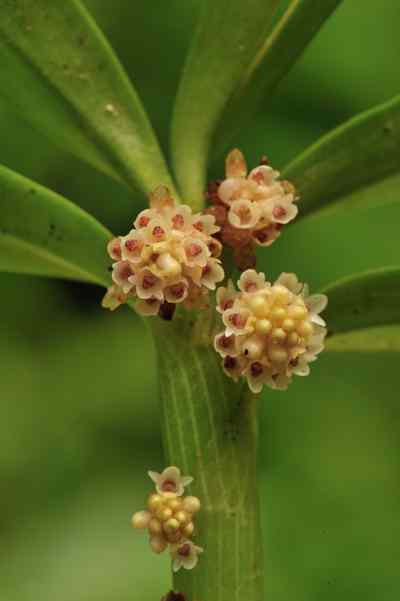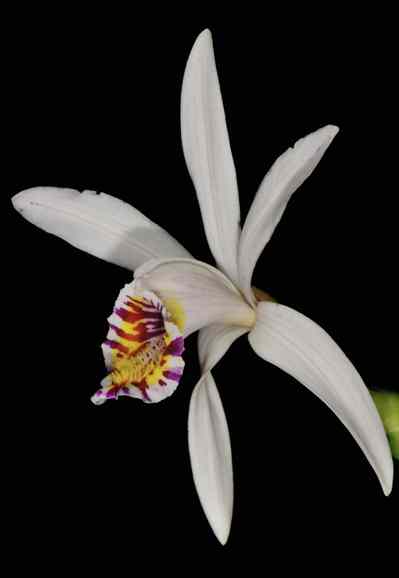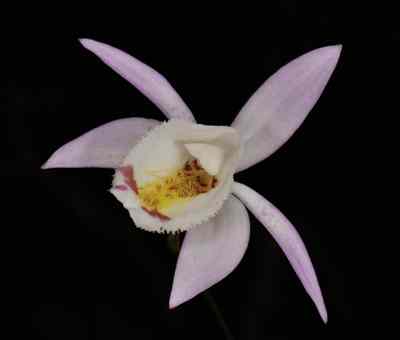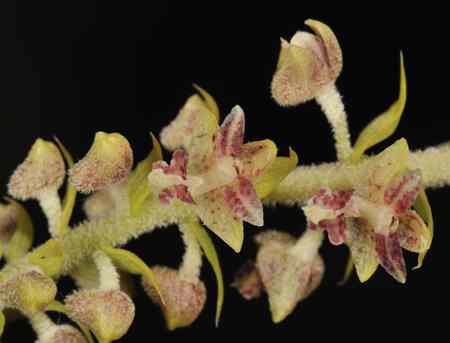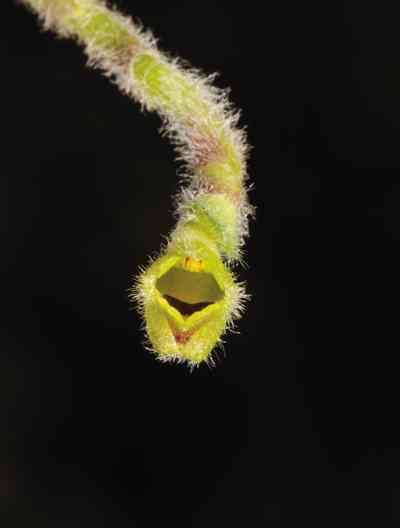The Plant
Epiphyte, but seen very often as lithophytes too. Whole plant less than 15 to 18 cm in height. Pseudo-bulbs four or five arising together, flattened, with parallel veins and coriaceous surface, 4 to 6 cm long and 1.5 to 3 cm in width. Young pseudo-bulbs covered with sheathing bracts. Leaves 4 to 6, oblanceolate, many nerved, 5 to 8 cm long 1 to 2.5 cm in width.
The Flower
Flowers many, very small, in spikes arising from the axils of the bracts and leaves of young pseudo-bulbs. Spikes without any bracts, 6 to 8 cm long, cylindric – but narrowing towards its apex. Sepals ovate, three to five nerved, lateral pair spreading and curved backward. Petals as long as the lateral sepals, but narrow, three nerved. Lip almost with triangular apex and tapering base, 3 lobed, disc with three very minute curved ridges.
Sepals and petals creamy white with pale pink margins. The base of the lip is of shades of brownish red with three distinct nerves of a darker shade, side lobes are shaded with pink, disc pinkish brown shading towards yellow at the apex. Column with shades of reddish brown.

The Pursuit
King and Pantling in their monumental publication wrote about this species, as, “Specimens grown at lower elevations have often more slender pseudo-bulbs and narrower leaves than those from cooler places, the spikes also are longer and not so densely flowered”. They also mentioned its altitudinal range as 2000 to 6000 ft.
This statement made my task difficult, as I want to find and study the plant from the cooler regions. I was concentrating above 5500 ft for this species. This plant with its tufted and flattened stems can be spotted as far as a mile in the plains. My search in higher altitudes never met any success for two consecutive years, even though I found many specimens from lower elevations.
Last year, I was staying inside a National Park between the months of February and May. From our base camp in the park, the nearest village was about 12 km away and we had to take a very difficult trek to get there. We used that arduous route several times, mainly to collect our food requirements. The responsibility of that work was handled by one of my assistants, who is very well connected in the village. As he was working with me for the last three years, he also became a very good orchid searcher. I had shown him the drawing of this particular species and also a few live specimens from lower elevations and requested him to look for the same during his trek. During one of his trips to collect vegetables from the village he found this species from an altitude of 5800 ft. He came back to me very excited and also with a few photographs taken on his mobile phone. I was also elated and visited the place after a couple of days. The plant was on a 30 ft high rock at a height of approximately 12 ft from the ground. As it was not the season of its blooming, we marked it for later visits.
Later on, during the monsoon months I visited the location several times to find it in bloom and produced this beautiful photograph.
Reference:
King, G. & Pantling, R. (1898). The Orchids of the Sikkim-Himalayas. Ann. Roy. Bot. Garden.(Calcutta). Eria convallarioides Lindl., Page no 118.

